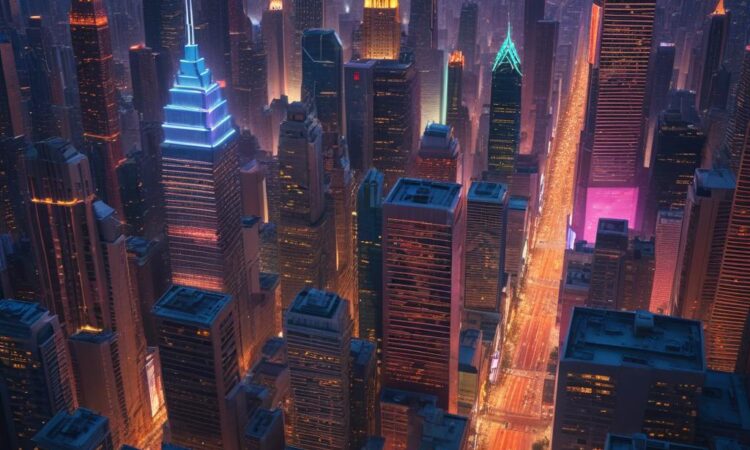The Future of Cinema: Blockbusters vs. Independent Films
The cinematic landscape is in constant flux, a dynamic ecosystem where established titans clash with emerging forces. At the heart of this evolution lies a perennial tension: the battle between blockbuster films, with their massive budgets, global marketing campaigns, and familiar formulas, and independent productions, which often operate on shoestring budgets, championing artistic vision and unconventional storytelling. This essay explores the evolving landscape of cinema, examining the ongoing tension between these two contrasting forces, analyzing changing audience preferences, and delving into the profound impact of streaming services on both genres.
The Rise of the Blockbuster
Blockbusters, with their spectacle and star power, have long held sway over the cinematic landscape. Driven by the relentless pursuit of box office dominance, Hollywood studios have perfected the art of crafting films that cater to a broad audience, emphasizing action, adventure, and special effects over nuanced character development or complex narratives. The rise of franchises like Marvel’s Cinematic Universe (MCU) and the \”Fast & Furious\” series exemplifies this trend. These franchises generate immense revenue, leveraging established characters and storylines to guarantee audience engagement. This focus on large-scale productions, however, has led to concerns about homogenization and a perceived lack of originality within the genre.
The Enduring Appeal of Independent Films
While blockbusters capture the spotlight, independent films carve out a unique space within the cinematic ecosystem. Often driven by artistic vision and a desire to tell stories that challenge conventions, these productions explore themes that are often ignored or marginalized by mainstream Hollywood. Independent cinema thrives on originality, embracing diverse perspectives and pushing the boundaries of storytelling. From the intimate dramas of Richard Linklater to the experimental works of David Lynch, independent films offer a refreshing counterpoint to the blockbuster juggernaut, enriching the cinematic landscape with their bold vision.
The Impact of Streaming Services
The advent of streaming services like Netflix, Hulu, and Amazon Prime Video has fundamentally reshaped the movie-going experience. These platforms have disrupted traditional distribution models, offering a vast library of content directly to consumers, bypassing the limitations of theatrical releases. This shift has created unprecedented opportunities for independent filmmakers, offering a platform to reach wider audiences without the financial constraints of traditional distribution channels. Streaming services have also invested heavily in original content, commissioning independent films and television series that cater to niche audiences and explore diverse themes.
Changing Audience Preferences
The rise of streaming services has coincided with a significant shift in audience preferences. Consumers are increasingly demanding a diverse range of content, seeking out films that reflect their own identities and experiences. This has created a more inclusive and nuanced cinematic landscape, where independent films have found a larger and more receptive audience. Streaming services have empowered viewers to become more active participants in shaping the future of cinema, with the power to discover and champion films that resonate with their values and interests.
The Future of Cinema: A Balancing Act
The future of cinema is a dynamic landscape, shaped by the interplay between blockbuster films and independent productions. While blockbusters continue to dominate the box office, independent films are carving out their own space, fueled by the rise of streaming services and changing audience preferences. The key to a thriving future lies in a balance between these two forces. Blockbusters can leverage their resources to push the boundaries of visual effects and storytelling, while independent films can continue to champion originality and diverse perspectives. The collaboration between these forces, through cross-promotion and shared distribution platforms, can create a more inclusive and exciting cinematic landscape for all.
The Role of Innovation
Innovation remains crucial to the future of cinema. Emerging technologies, such as virtual reality (VR) and augmented reality (AR), offer exciting possibilities for immersive storytelling experiences. Independent filmmakers are particularly adept at embracing these technologies, pushing the boundaries of what cinema can be. Similarly, the integration of social media and online platforms into the cinematic experience can foster deeper engagement between filmmakers and audiences, creating a more interactive and participatory form of storytelling.
Conclusion: A Diverse and Thriving Landscape
The future of cinema is a bright one, characterized by diversity, innovation, and a continuous evolution of storytelling. The tension between blockbuster films and independent productions is not a zero-sum game but a dynamic interplay that enriches the cinematic landscape. As audience preferences continue to evolve and technological advancements shape new possibilities, the future of cinema promises to be an exciting journey, where stories of all shapes and sizes find a place to flourish.

